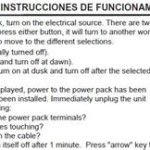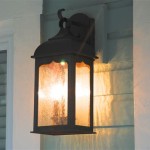Low Voltage vs. Line Voltage Outdoor Lighting: Crucial Aspects to Consider
Outdoor lighting plays a pivotal role in illuminating pathways, enhancing security, and creating an inviting atmosphere. When it comes to choosing between low voltage and line voltage lighting systems, understanding their distinct characteristics is crucial to make an informed decision.
Low Voltage Outdoor Lighting
Low voltage systems typically operate at 12 volts or 24 volts, significantly lower than the 120 volts used in line voltage systems. This lower voltage reduces the risk of electrical shock, making it safer for handling and installation.
Advantages:
- Enhanced safety due to low voltage
- Easier DIY installation
- Energy efficiency
- Versatility in placement and design
Disadvantages:
- Requires a transformer
- May have limited wattage options
- Potential voltage drop over long distances
Line Voltage Outdoor Lighting
Line voltage systems operate at the same 120 volts as household electricity. The higher voltage allows for more powerful lighting fixtures and longer runs.
Advantages:
- Higher wattage options for brighter illumination
- Longer runs without voltage drop
- Greater selection of fixtures
- Increased risk of electrical shock
- Requires professional installation
- Typically less energy-efficient than low voltage
Disadvantages:
Factors to Consider When Choosing
The choice between low voltage and line voltage outdoor lighting depends on specific requirements and preferences.
Safety: Low voltage is safer, especially for DIY projects.
Ease of Installation: Low voltage is easier to install, while line voltage requires professional expertise.
Energy Efficiency: Low voltage is generally more energy-efficient than line voltage.
Illumination Needs: Line voltage offers higher wattage options for brighter lighting.
Budget: Line voltage systems tend to be more expensive due to professional installation and higher wattage fixtures.
Personal Preferences: Ultimately, the best choice depends on individual preferences and the specific needs of the outdoor space.
Conclusion
Low voltage and line voltage outdoor lighting systems have their unique advantages and disadvantages. By understanding the key aspects of each type, individuals can make an informed decision based on their safety concerns, ease of installation requirements, energy efficiency goals, illumination needs, and budget constraints.
Remember, always consult with a qualified electrician for professional advice on electrical work to ensure a safe and effective outdoor lighting solution.

Low Voltage Vs Line Landscape Lighting

Line Voltage And Low Landscape Lighting Ideas

What Are The Differences In Line Voltage And Low Outdoor Lighting

Low Voltage Vs Line Landscape Lighting

Line Voltage And Low Landscape Lighting Ideas

120 Volt Lights Vs 24 12 Take Three Lighting

Line Voltage And Low Landscape Lighting Ideas

Low Voltage System Layout Landscape Lighting Supply Company

What Are The Practical Benefits Of Landscape Lighting Nightvision Outdoor

Line Voltage And Low Landscape Lighting Ideas







